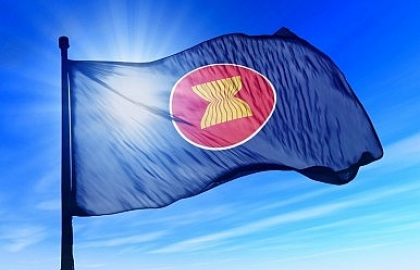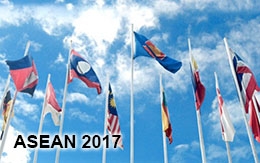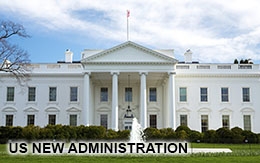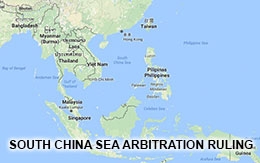The Southeast Asia Claimant States, ASEAN and the South China Sea Dispute
ASEAN needs to address both internal issues affecting its unity and cohesion, and external issues relating to its relations with China and other dialogue partners on South China Sea issues.

Part 1 Policy Approaches of the Claimant States after the Award by the Arbitral Tribunal
The general response by Southeast Asian states to the Award by the Arbitral Tribunal overwhelmingly has been low-key, muted, and in line with recent ASEAN declaratory policy. The four claimant states may be divided into two groups – the front-line states (Philippines and Vietnam) and the other claimants (Malaysia and Brunei).
Front-line States
The Philippines. The new Philippine Administration issued a statement on 12 July that welcomed the Arbitral Tribunal’s Award and called “on all those concerned to exercise restraint and sobriety …. The Philippines strongly affirms its respect for this milestone decision as an important contribution to ongoing efforts in addressing disputes in the South China Sea.” The Philippines will replace Laos at ASEAN’s next Chair in 2017.
Vietnam. On 12 July a spokesperson for the Foreign Ministry stated: “Viet Nam welcomes the fact that, on 12 July 2016, the Tribunal issued its Award in the arbitration between the Philippines and China. Viet Nam will make a statement on the content of this Award … Viet Nam strongly supports the settlement of disputes in the East Sea by peaceful means, including legal and diplomatic processes …” As of this writing no follow up statement has been issued (19 October 2016).
Other Claimant States
Malaysia. Malaysia’s Foreign Ministry issued a statement on 13 July that noted the Arbitral Tribunal had issued an award and stated that Malaysia believed
that all relevant parties can peacefully resolve disputes by full respect for diplomatic and legal processes, and relevant international law and 1982 UNCLOS. Malaysia believes that it is important to maintain peace and stability through the exercise of self-restraint in the conduct of activities that may further complicate disputes or escalate tension, and avoid the threat or use of force in the South China Sea.
On 14 July Brunei’s Deputy Minister for Foreign Affairs gave an exclusive interview to The Brunei Times in which he stated:
Part 2 ASEAN and the South China Sea Dispute after the Award by the Arbitral Tribunal
The ASEAN foreign ministers met in Vientiane for their annual ministerial meeting nearly two weeks after the Award was issued. Kavi Chongkittavorn has made a persuasive argument that “ASEAN’s overall position on the South China Sea has been strengthened.” He argues that the outcome of the ASEAN Ministerial Meeting “unexpectedly generates a win–win situation for concerned parties.” He notes that with the Philippines’ return to the fold, ASEAN’s bargaining power has increased and “renewed the process of mending ASEAN–China relations …”
Kavi’s argument is based on an exegesis of four documents adopted at these meetings:- ASEAN Foreign Minister’s Statement on the Occasion of the 40th Anniversary of the Treaty of Amity and Cooperation in Southeast Asia (TAC), (hereafter ASEAN Foreign Minister’s Statement on the TAC),
- Joint Communiqué of the 49th ASEAN Foreign Ministers’ Meeting, Vientiane, 24 July 2016, (hereafter 49th AMM Joint Communiqué),
- Joint Statement of the Foreign Ministers of ASEAN Member States and China on the Full and Effective Implementation of the Declaration on the Conduct of Parties in the South China Sea (25 July 2016), (hereafter ASEAN-China Joint Statement on the DOC), and
- Joint Statement of the Foreign Ministers of ASEAN Members States on the Maintenance of Peace, Security and Stability in the Region, (hereafter ASEAN Joint Statement on Peace, Security and Stability in the Region).
According to Kavi, the ASEAN Foreign Minister’s Statement on the TAC “jump-started all ASEAN members to work on the content of the 49th ASEAN joint communiqué … [and] signalled a united ASEAN position on the dispute.” The South China Sea was addressed in the joint communiqué in a separate section, as is usual. This document included eight paragraphs that closely followed earlier statements. For example, in paragraph 174 the ASEAN foreign ministers expressed their
In paragraph 177 the foreign ministers “emphasised the importance of non-militarisation and self-restraint in the conduct of all activities, including land reclamation that could further complicate and situation and escalate tensions in the South China Sea.” In paragraph 179 the foreign ministers “highlighted the urgency to intensify efforts to achieve further substantive progress on the implementation of the DOC in its entirety as well as substantive negotiations for the early conclusion of the COC including the outline, and timeline of, the COC.”
What was little-noticed was that the ASEAN foreign ministers extracted a fundamental section from the Press Statement by the Chairman of the ASEAN Foreign Ministers’ Retreat held in Vientiane in February 2016 and inserted it as the second paragraph of the 49th AMM Joint Communiqué under the heading “ASEAN Community Building”. Paragraph 2 read:
We reaffirm our shared commitment to maintaining and promoting peace, security and stability in the region, as well as to the peaceful resolution of disputes, including full respect for legal and diplomatic process, without resorting to the threat or use of force, in accordance with the universally recognized principles of international law, including the 1982 United Nations Convention on the Law of the Sea (UNCLOS) [emphasis added].
The reference to “legal and diplomatic processes” can be read as an allusion to the proceedings of the Arbitral Tribunal.
Next, the foreign ministers of ASEAN member states and China issued a Joint Statement on the DOC in which they committed themselves “to the full and effective implementation of the DOC in its entirety and working substantively towards the early adoption of a Code of Conduct in the South China Sea (COC) based on consensus.”
Further, the ASEAN foreign ministers extracted a commitment in the 2002 DOC “to exercise self-restraint in the conduct of activities that would complicate or escalate disputes and affect peace and stability” and inserted it as Point 3 in the ASEAN–China Joint Statement on the DOC to give it renewed emphasis. Point 3 also reiterated that self-restraint included such activities as “refraining from action of inhabiting on the presently uninhabited islands, reefs, shoals, cays, and other features …” This wording could be read as including Scarborough Shoal, which is presently uninhabited.
Finally, to round off ASEAN’s united-front stance on the South China Sea, the foreign ministers issued the ASEAN Joint Statement on Peace, Security and Stability in the Region.
ASEAN’s most recent policy on the South China Sea was contained in the statement released by the chair of the 28th and 29th ASEAN Summits held in Vientiane from 6–7 September. Paragraph 5 of this statement replicated Point 2 in the 49th AMM Joint Communiqué that reaffirmed “full respect for legal and diplomatic processes." The section on the South China Sea contained eight paragraphs, the first seven of which were word-for-word the same as those in the 49th AMM Joint Communiqué. The eighth paragraph welcomed the adoption of the ASEAN–China Joint Statement on the DOC and the recently adopted joint statement on CUES and Guidelines for Hotline Communications.
...
Carl Thayer is Emeritus Professor at The University of New South Wales and Director of Thayer Consultancy.
The paper was presented at the Conference: "The South China Sea in the Broader Maritime Security of the Indo-Pacific Conference", 28-30 September 2016, Canberra, Australia. This conference is co-organized by UNSW Canberra at the Australian Defence Force Academy (ADFA), the Diplomatic Academy of Vietnam (DAV), and the Japan Institute for International Affairs (JIIA).
Click here for full text.










